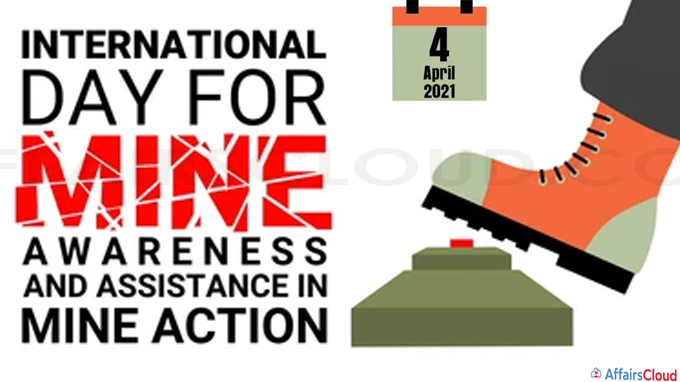Mine Awareness Day: Protecting Lives, Restoring Hope- Every year, on April 4th, the world commemorates the International Day for Mine Awareness and Assistance in Mine Action. This day was established by the United Nations in 2005 to bring attention to the dangers posed by landmines and explosive remnants of war (ERWs), as well as the ongoing efforts to eliminate these threats. The observance aims to highlight the global efforts toward demining, raise awareness about the impact of mines on communities, and promote initiatives for mine clearance and victim assistance.
The Global Mine Crisis
Landmines, once deployed in conflict zones, can remain dangerous long after the fighting has ended. These invisible killers, often buried underground or left on the surface, continue to pose severe risks to civilians, especially in post-conflict regions. According to the United Nations, millions of landmines still lie buried in former war zones, affecting millions of people. The risks associated with landmines are immense: they cause injury, death, displacement, and prevent economic recovery and social development.
In addition to the physical harm caused by landmines, they also disrupt the daily lives of those who live in the affected areas. Mines render large swathes of land uninhabitable and unusable, preventing people from cultivating crops, grazing livestock, or building homes. These consequences have a ripple effect, exacerbating poverty, hindering post-conflict recovery, and perpetuating cycles of trauma.
The tragic reality is that civilians, including children, often bear the brunt of the landmine crisis. While landmines are primarily placed during times of conflict, their deadly legacy lingers long after peace treaties are signed. Innocent individuals who have no connection to the original conflict end up suffering from the consequences of these weapons.
A Global Commitment to Mine Action
The global community has made significant strides in addressing the mine problem over the years. The International Day for Mine Awareness serves as a reminder of the work that remains to be done, but it also celebrates the achievements made through coordinated efforts. The United Nations Mine Action Service (UNMAS), alongside other organizations such as the International Committee of the Red Cross (ICRC) and non-governmental organizations (NGOs) like Mines Advisory Group (MAG) and Handicap International, play critical roles in addressing this global challenge.
One of the most significant milestones in the fight against landmines is the Ottawa Treaty, also known as the Mine Ban Treaty, which was adopted in 1997. The treaty prohibits the use, stockpiling, production, and transfer of anti-personnel mines. As of 2023, over 160 countries have ratified the treaty, marking a historic commitment to rid the world of these dangerous weapons. The treaty’s implementation has led to the destruction of millions of landmines and the clearance of vast areas of land. However, challenges remain, particularly in conflict-affected regions where mines continue to be used despite the treaty’s provisions.
In addition to the political and legal efforts, demining operations are at the heart of global mine action efforts. These operations involve identifying and safely removing landmines from affected areas, often with the use of specialized equipment, trained personnel, and the support of local communities. The process of clearing mines is complex, time-consuming, and hazardous, but it is essential to the restoration of safe living conditions for affected populations.
Victim Assistance: Beyond Demining
While mine clearance is a critical component of mine action, it is equally important to focus on victim assistance. The victims of landmines face not only physical injuries but also psychological and social challenges. Many survivors suffer from lifelong disabilities, making it difficult for them to fully reintegrate into society. As such, victim assistance programs provide crucial support through medical treatment, rehabilitation, prosthetics, psychological counseling, and economic reintegration programs.
In addition, survivors often face social stigma, as they may be seen as burdens on their communities. This marginalization makes it even harder for victims to rebuild their lives. Victim assistance programs aim to address these challenges by offering comprehensive support that helps survivors regain their independence and dignity.
The International Day for Mine Awareness is an opportunity to highlight the ongoing need for victim assistance. It underscores the importance of not only removing landmines but also providing survivors with the resources and support they need to rebuild their lives. Only by addressing both the physical and emotional needs of survivors can societies move forward and heal from the scars of war.
The Role of Education and Awareness
Raising awareness about the dangers of landmines is another critical aspect of mine action. Education programs, particularly those aimed at children, play a vital role in preventing accidents and saving lives. In many mine-affected regions, people—especially children—are unaware of the risks posed by landmines and ERWs. This lack of knowledge can result in tragic accidents, as unsuspecting individuals may come into contact with these hidden explosives.
To combat this, educational initiatives provide communities with the information they need to stay safe. These programs teach people how to recognize landmines, avoid risky areas, and report any suspicious items to the authorities. In schools, children are taught about the dangers of mines, empowering them to share this knowledge with their families and communities.
These educational efforts not only save lives but also foster a culture of safety and resilience in communities affected by landmines. The International Day for Mine Awareness serves as a reminder of the importance of education and community engagement in the fight against landmines.
The Path Ahead: Challenges and Opportunities
Despite the progress made in mine action, significant challenges remain. New conflicts, the continued use of landmines in some regions, and the long-lasting effects of past conflicts present ongoing obstacles. The financial cost of mine clearance is also considerable, with billions of dollars needed to clear the estimated 60 million landmines still scattered across the globe. Furthermore, the COVID-19 pandemic has disrupted many mine action operations, slowing down efforts to clear land and assist victims.
However, there are also opportunities for hope. Advances in technology, such as drone surveying and robotic mine clearance systems, have made demining efforts more efficient and safer. Increased international cooperation, greater funding commitments, and the continued dedication of humanitarian organizations provide hope for a world free of landmines in the future.
On this International Day for Mine Awareness, we are reminded that the fight against landmines is far from over. It requires the concerted efforts of governments, international organizations, NGOs, and local communities. Most importantly, it requires the collective will to ensure that no one is left behind in the struggle for a safer, mine-free world.
As we reflect on the impact of landmines and explosive remnants of war, let us renew our commitment to mine action. Let us stand in solidarity with those who live in mine-affected areas, honor the survivors, and remember those whose lives have been lost. Through continued awareness, education, and action, we can build a world where the deadly legacy of landmines is erased once and for all.
What Role Do English, Mandarin, Malay, and Tamil Play in Singapore? | Maya




